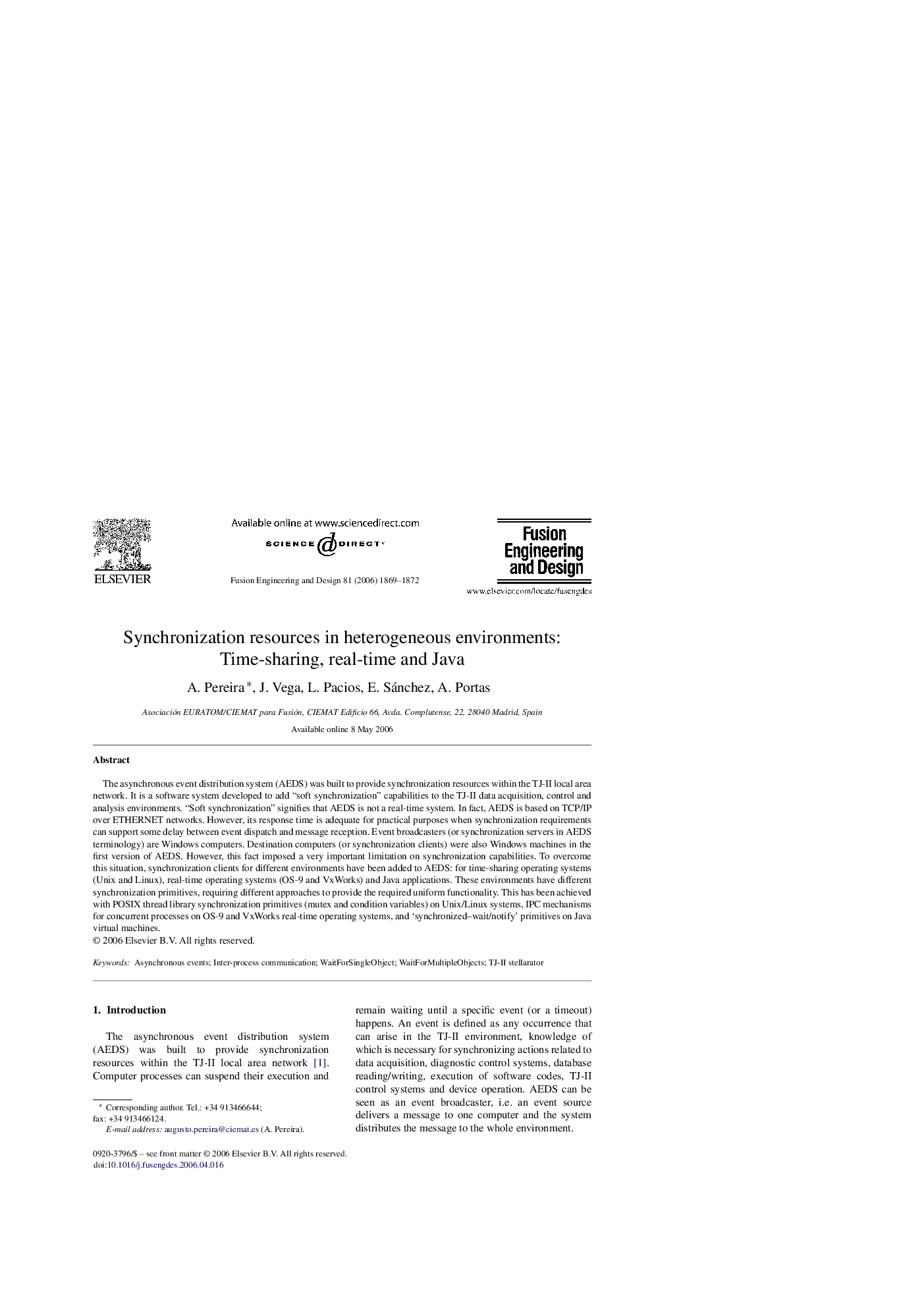| Article ID | Journal | Published Year | Pages | File Type |
|---|---|---|---|---|
| 273780 | Fusion Engineering and Design | 2006 | 4 Pages |
The asynchronous event distribution system (AEDS) was built to provide synchronization resources within the TJ-II local area network. It is a software system developed to add “soft synchronization” capabilities to the TJ-II data acquisition, control and analysis environments. “Soft synchronization” signifies that AEDS is not a real-time system. In fact, AEDS is based on TCP/IP over ETHERNET networks. However, its response time is adequate for practical purposes when synchronization requirements can support some delay between event dispatch and message reception. Event broadcasters (or synchronization servers in AEDS terminology) are Windows computers. Destination computers (or synchronization clients) were also Windows machines in the first version of AEDS. However, this fact imposed a very important limitation on synchronization capabilities. To overcome this situation, synchronization clients for different environments have been added to AEDS: for time-sharing operating systems (Unix and Linux), real-time operating systems (OS-9 and VxWorks) and Java applications. These environments have different synchronization primitives, requiring different approaches to provide the required uniform functionality. This has been achieved with POSIX thread library synchronization primitives (mutex and condition variables) on Unix/Linux systems, IPC mechanisms for concurrent processes on OS-9 and VxWorks real-time operating systems, and ‘synchronized–wait/notify’ primitives on Java virtual machines.
